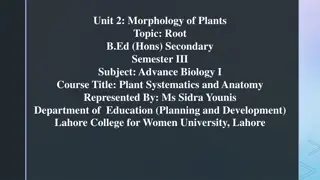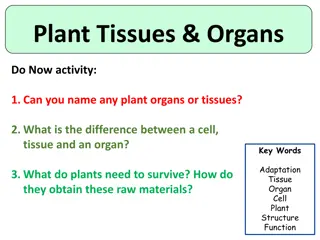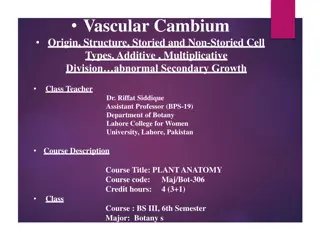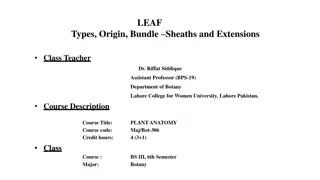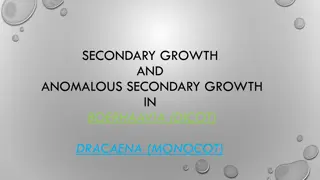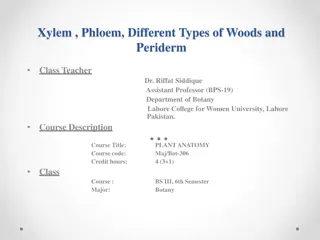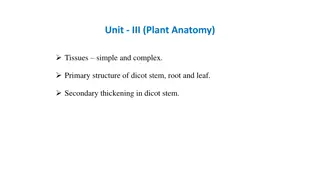Understanding the Anatomy and Functions of Plant Stems
Plant stems play a crucial role in the growth and survival of plants. They transport water, minerals, and sugars, support leaves and flowers, and store food. The outer structures of stems, such as buds and nodes, are essential for plant growth. Furthermore, the tissues inside the stem, including xylem, phloem, and cambium, contribute to the overall function of the stem. Understanding the anatomy and functions of plant stems is key to understanding plant growth and development.
Download Presentation

Please find below an Image/Link to download the presentation.
The content on the website is provided AS IS for your information and personal use only. It may not be sold, licensed, or shared on other websites without obtaining consent from the author. Download presentation by click this link. If you encounter any issues during the download, it is possible that the publisher has removed the file from their server.
E N D
Presentation Transcript
Stem Anatomy Stem Anatomy 2019-2020 2NDGRADE HANNAH KEMAL HANNAH.KEMAL@ISHIK.EDU.IQ
What are Stems? What are Stems? A Stem is the plant axis that is normally divided into nodes and internodes: The nodes hold one or more leaves, as well as buds which can grow into branches.
Functions of the Stem Functions of the Stem Transport water, minerals, sugars Support hold flowers and leaves up toward the sun Storage of extra food, and sometimes water (onion, garlic, cacti) Photosynthesis only can occur if stem is green (cactus, bamboo, garden veggies)
Outer Structures of Stem Outer Structures of Stem 1. Terminal bud contains apical meristem; found at the tip of a stem; it increases the length of a stem 2. Node where the leaf and bud attaches to the stem 3. Internode distance between two nodes; tells how much the tree grew in one season 4. Lateral bud also called the axillary bud; develops into a leaf or flower
5. Lateral and terminal buds are protected by bud scales helps the bud survive harsh climate changes. 6. Leaf scar is the remains of the leaf after it has fallen off of the tree; it is just below the lateral bud. 7. Lenticels are small spots on the stem that allow a stem to exchange gases (oxygen & carbon dioxide) with the environment.
Tissues inside the Stem Tissues inside the Stem 1. Xylem conducts the water and minerals upward throughout the plant Made of tube-like cells which grow together to conduct liquids Tends to be found closer to the center of the stem. 2. Phloem conducts the food that is produced in the leaf downward to the rest of the plant. These cells also form tubes Tends to be found towards the outside of the stem 3. Cambium the tissue responsible for the production of new xylem and phloem. Also increases the girth (width) of a stem. Generally found between the xylem and phloem.
Monocots vs. Dicots Monocots vs. Dicots Monocots have their vascular bundles scattered throughout the stem Monocots tend to be herbaceous
Monocots vs. Dicots Monocots vs. Dicots Dicots have their vascular bundles in rings Dicots are generally woody Determines the age of the plant
Thank You! Thank You!






